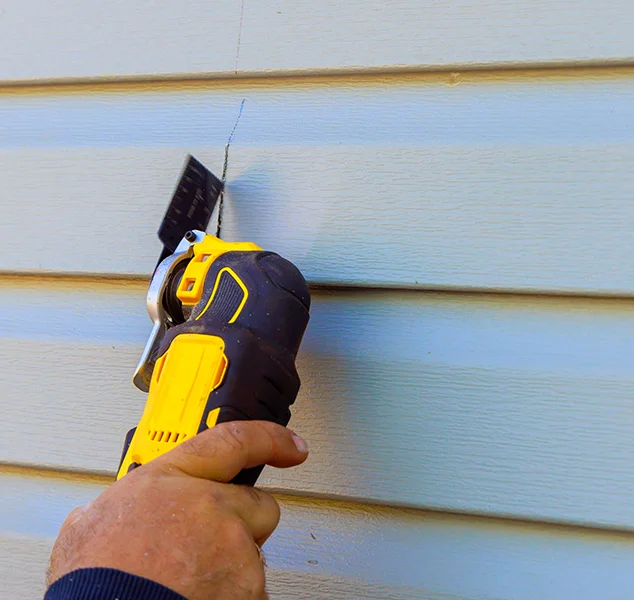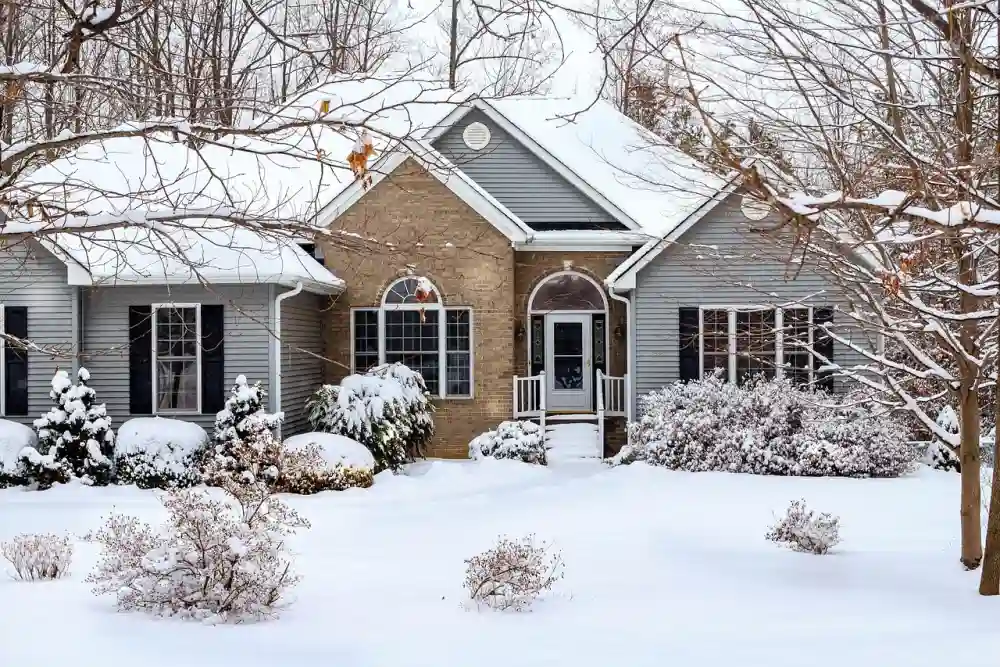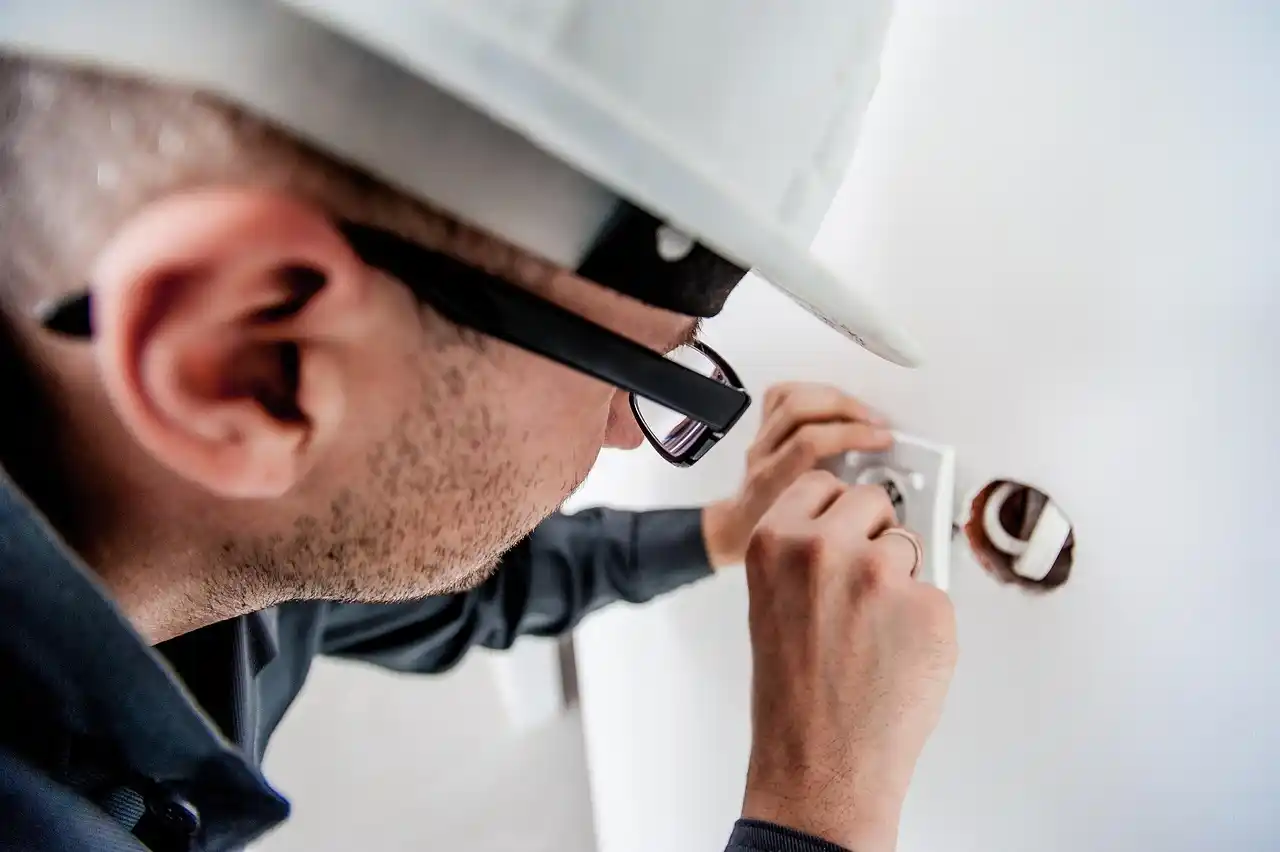Estimate for Siding Replacement: What to Expect and How to Budget
Siding replacement represents a major home improvement investment that dramatically impacts both appearance and protection. Understanding estimates for siding replacement helps homeowners budget accurately, compare contractor proposals effectively, and make informed material choices that balance cost with performance. Northern Virginia homeowners planning siding projects face estimates ranging from $8,000 to $25,000 depending on home size, material selection, and project complexity. This comprehensive guide explains what drives siding replacement costs, how to evaluate estimates from contractors, and strategies for budgeting this significant home improvement investment.
Understanding Siding Replacement Cost Factors
Accurate estimates for siding replacement depend on multiple interconnected factors. Home square footage provides the foundation—typical single-story homes require 1,500-2,000 square feet of siding, while two-story homes need 2,500-3,500 square feet. Material choice dramatically impacts costs, with vinyl siding ranging $3-8 per square foot installed, fiber cement at $6-12 per square foot, and premium options like cedar or engineered wood reaching $8-15 per square foot.
Project complexity affects labor costs significantly. Simple rectangular homes with minimal trim cost less than homes featuring multiple gables, dormers, bay windows, or intricate architectural details requiring custom cutting and fitting. Removal and disposal of existing siding adds $1,000-3,000 to projects. Underlying repairs to sheathing, insulation, or water damage discovered during removal can increase costs substantially. Understanding these variables helps homeowners interpret contractor estimates and plan realistic budgets for siding replacement projects.

Material Options and Associated Costs
Vinyl siding dominates residential siding installations due to favorable cost-performance balance. Standard vinyl costs $3-5 per square foot installed, while premium insulated vinyl reaches $6-8 per square foot. Vinyl requires minimal maintenance, resists rot and insects, and comes in numerous colors and styles. However, it can crack in extreme cold and fade over time, particularly in darker colors exposed to direct sunlight.
Fiber cement siding like James Hardie products costs $6-12 per square foot installed but delivers superior durability, fire resistance, and paint retention. This material resists rot, insects, and impact damage while accepting paint for unlimited color options. Engineered wood siding provides authentic wood appearance at $7-12 per square foot, offering better moisture resistance than natural wood. Premium natural wood cedar siding ranges $8-15 per square foot, delivering unmatched aesthetics but requiring regular maintenance to prevent rot and deterioration.
Breaking Down Siding Replacement Estimates
Professional siding replacement estimates itemize costs clearly, distinguishing between materials, labor, and additional services. Material costs include siding panels, trim boards, corner posts, starter strips, and fasteners. Quality estimates specify exact product lines and manufacturers rather than generic "vinyl siding" descriptions. Labor costs cover old siding removal, surface preparation, installation of weather barriers and insulation, and new siding installation.
Comprehensive estimates address necessary supplementary work: window and door trim replacement, soffit and fascia updates, painting or staining requirements, and sheathing repairs. They clarify disposal fees for old materials, permit costs where required, and timeline expectations. Warranty information covering both materials and workmanship should be detailed. When comparing contractor estimates, this level of detail separates professional proposals from vague approximations that lead to surprise charges.

Hidden Costs to Anticipate
Siding replacement projects often encounter unforeseen expenses that initial estimates cannot predict. Rotted sheathing discovered during old siding removal requires replacement at $2-4 per square foot. Water-damaged wall studs necessitate structural repairs adding $500-2,000 to projects. Outdated electrical boxes, outdoor outlets, or lighting fixtures may require relocation or upgrades to meet current codes, costing $200-800 per fixture.
Permit requirements vary by locality—some Northern Virginia jurisdictions require permits for complete siding replacement while others exempt this work. Permits cost $150-500 when required. Matching existing colors or styles on discontinued products forces choosing between close approximations or replacing additional sections for uniform appearance. Budget an additional 10-15% contingency beyond base estimates to accommodate these potential surprises without derailing projects or forcing compromises on quality.
Evaluating Contractor Estimates
Comparing estimates for siding replacement requires looking beyond total price to evaluate scope, quality, and contractor credentials. Request itemized proposals from at least three reputable contractors to establish pricing baselines and identify outliers. Dramatically low bids often indicate shortcuts, inferior materials, or contractors who will demand additional payments for "unexpected" work. Unusually high estimates may reflect premium positioning or inefficiency.
Verify that estimates compare equivalent materials and scope. One contractor quoting premium insulated vinyl while another proposes standard vinyl creates price differences unrelated to labor costs or markup. Confirm whether quotes include trim replacement, old siding disposal, and warranty coverage. Check contractor licenses, insurance certificates, and references. Ask about subcontracting—some contractors outsource installation to unknown crews, while others employ trained staff. These evaluation steps parallel those used when assessing siding repair contractors.

Creating a Realistic Budget
Effective siding replacement budgeting starts with understanding average costs for your home size and chosen materials. Research typical prices for Northern Virginia installations—vinyl averages $10,000-15,000 for standard 2,000 square foot homes, while fiber cement ranges $15,000-22,000 for equivalent coverage. Add 15-20% to base estimates for contingencies addressing unforeseen repairs or upgrades discovered during installation.
Consider financing options if upfront payment strains budgets. Many contractors offer payment plans or work with lending companies providing home improvement loans. Some homeowners leverage home equity lines of credit for favorable interest rates and tax advantages. Factor in long-term value when making material decisions—spending $5,000 more for fiber cement siding that lasts 50 years versus 25-year vinyl may prove economical over ownership duration. Budget timing around seasonal pricing variations; fall and winter often bring discounts as contractors seek work during slower periods.
Energy Efficiency and Insulation Considerations
Modern siding replacement offers opportunities for significant energy efficiency improvements beyond mere aesthetics. Insulated vinyl siding includes foam backing that reduces heat transfer, potentially lowering heating and cooling costs by 10-20%. This upgrade adds $1-2 per square foot to base vinyl costs but delivers ongoing utility savings and improved comfort.
Complete siding replacement allows installing new house wrap or weather-resistant barriers that improve air sealing and moisture control. Upgrading from basic felt paper to modern weather barriers costs $0.50-1.50 per square foot but provides superior protection against water infiltration and air leakage. Adding exterior rigid foam insulation beneath siding increases R-value significantly, though this addition requires addressing window and door trim extensions. These energy improvements often qualify for utility rebates or tax credits that offset initial costs. Learn more about combining exterior improvements when planning roof and siding projects together.

Timing Your Siding Replacement Project
Project timing affects both pricing and installation quality. Spring and fall represent ideal installation periods in Northern Virginia, with moderate temperatures allowing proper material expansion and adhesive curing. Summer installations proceed quickly but extreme heat can complicate vinyl handling. Winter projects offer potential discounts but cold temperatures make some materials brittle and adhesives less effective.
Contractor availability varies seasonally—spring and early summer see peak demand with premium pricing and limited scheduling flexibility. Late fall and winter typically offer better pricing and more flexible scheduling as contractors seek work. However, weather delays become more likely during winter months. Consider planning replacement projects during shoulder seasons for balance between favorable pricing and reliable weather conditions.
Insurance Coverage for Siding Replacement
Homeowners insurance may cover siding replacement following storm damage from hail, wind, or falling trees. Insurance adjusters provide damage assessments and initial estimates that may differ from contractor quotes. Experienced contractors familiar with insurance claims help document damage comprehensively and provide detailed supplement requests when adjuster estimates fall short of actual replacement costs.
Understanding coverage limitations prevents disappointment—most policies cover storm damage but exclude deterioration from age, neglect, or normal wear. Deductibles typically range $500-2,500, reducing insurance benefits for smaller claims. Some policies provide actual cash value settlements accounting for siding age and depreciation rather than full replacement costs. Review policy details carefully and work with contractors experienced in insurance claim processes to maximize legitimate coverage.

Partial Replacement vs. Complete Siding Replacement
Budget constraints sometimes force choosing between partial siding replacement and complete house coverage. Partial replacement makes sense when damage affects isolated areas and existing siding remains in good condition. Storm damage to one elevation, rot limited to shaded areas, or aesthetic updates to highly visible front facades justify partial approaches. However, material matching challenges arise—discontinued products or faded existing siding makes seamless integration difficult.
Complete replacement delivers superior long-term value despite higher upfront costs. It eliminates matching concerns, allows comprehensive moisture barrier upgrades, and provides uniform warranties covering entire homes. The incremental cost difference between partial and complete replacement often proves smaller than expected since labor setup, disposal, and mobilization costs remain similar regardless of scope. Evaluate total lifecycle costs when deciding between approaches, as partial fixes often lead to additional projects within 5-10 years.
Maximizing Value from Siding Investment
Siding replacement ranks among the best-returning home improvement investments, typically recouping 75-85% of costs in increased property value. Quality materials and professional installation enhance curb appeal dramatically, making homes more attractive to potential buyers. Energy efficiency improvements reduce operating costs throughout ownership. Low-maintenance materials like vinyl or fiber cement eliminate ongoing painting and repair expenses.
Maximize investment value by choosing materials appropriate for your climate and maintenance preferences. Select quality contractors with strong local reputations ensuring warranty support and quality workmanship. Coordinate siding replacement with other exterior projects—combining with siding cleaning, window replacement, or roof work reduces mobilization costs and creates cohesive exterior updates. Document all work with photos, receipts, and warranty information for future reference and potential resale value.

Local Market Considerations in Northern Virginia
Northern Virginia siding replacement costs reflect regional factors including higher labor rates, strict building codes, and HOA requirements. Labor costs in areas like Reston, McLean, and Vienna run 10-20% higher than rural Virginia areas due to prevailing wage rates and cost of living. Many HOAs restrict material choices, colors, or styles requiring premium products or specific approvals that affect costs and timelines.
Local building codes may mandate specific moisture barriers, insulation requirements, or installation methods exceeding minimum standards elsewhere. These requirements protect homes but increase project costs compared to less-regulated areas. Access challenges in established neighborhoods with mature landscaping, limited parking, or narrow lots can increase labor costs. Understanding these regional factors helps homeowners interpret estimates accurately and budget appropriately for local market conditions.
Financing Your Siding Replacement Project
Multiple financing options make siding replacement accessible even when upfront cash is limited. Home equity loans or lines of credit offer favorable interest rates and potential tax deductions, though they use your home as collateral. Personal loans through banks or credit unions provide fixed rates without home collateral but typically charge higher interest. Credit cards work for smaller projects but high interest rates make them expensive for large installations.
Many contractors partner with financing companies offering promotional terms like zero-interest periods for qualified borrowers. These programs simplify payment processing but require careful attention to promotional term expiration and subsequent interest rates. Some contractors offer in-house payment plans spreading costs over several months. Government programs occasionally provide energy-efficiency improvement loans or rebates for qualifying upgrades. Compare total costs including interest when evaluating financing options to identify the most economical approach for your situation.

Questions to Ask When Getting Estimates
Informed homeowners ask specific questions ensuring estimates provide complete, comparable information. Essential questions include: What specific product brand and line are you proposing? Does your estimate include removing and disposing of existing siding? What preparation work is included—replacing weather barriers, repairing sheathing, or upgrading insulation? How do you handle unexpected repairs discovered during removal? What warranties cover materials and workmanship?
Additional critical questions address logistics and credentials: How long have you operated locally and can you provide recent customer references? Are you licensed and insured with workers' compensation and liability coverage? Who performs the actual installation—your employees or subcontractors? What is your estimated timeline and how do you handle weather delays? Will you obtain necessary permits and schedule inspections? These questions reveal contractor professionalism and help avoid problems before contracts are signed.
Ready for Your Siding Replacement Estimate?
Understanding estimates for siding replacement empowers homeowners to budget effectively, compare proposals accurately, and select contractors confidently. By knowing cost factors, material options, and evaluation criteria, you protect your investment while achieving beautiful, durable results that enhance your home for decades. Professional estimates from experienced local contractors provide the foundation for successful projects delivering exceptional value.
Reston Roof offers comprehensive siding replacement services throughout Northern Virginia, providing detailed estimates that clearly explain all costs, materials, and workmanship. Our experienced team helps you evaluate material options, understand budget implications, and make informed decisions balancing cost with quality. We provide transparent pricing, use premium materials, and stand behind our work with industry-leading warranties. Contact us at (571) 453-6515 to schedule a free siding replacement estimate. We'll assess your home's needs, discuss your preferences and budget, and provide a detailed proposal helping you plan your project confidently. Don't start your siding replacement journey with incomplete information—get the professional estimate and expert guidance you need for success.
